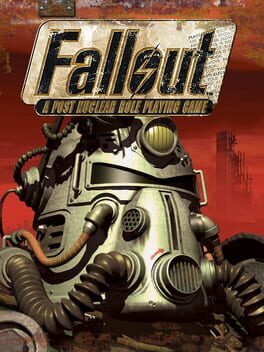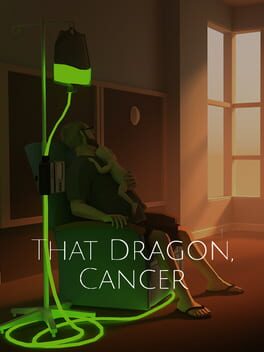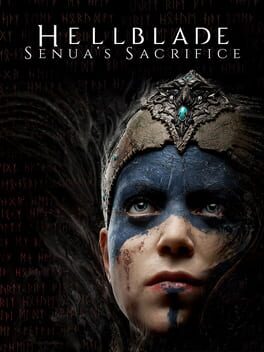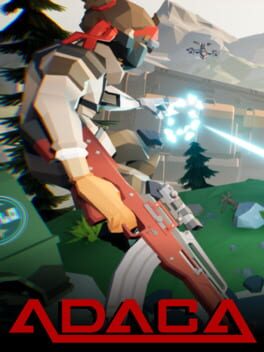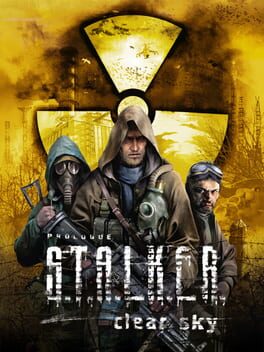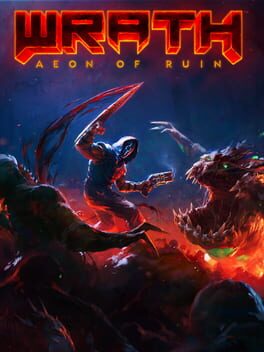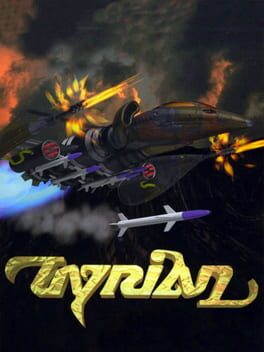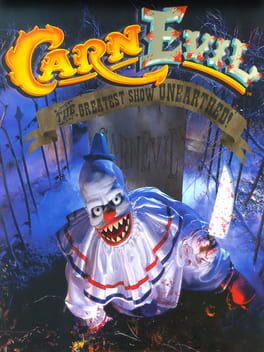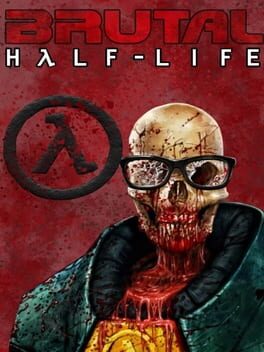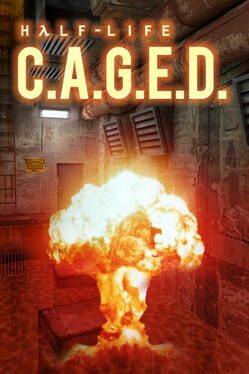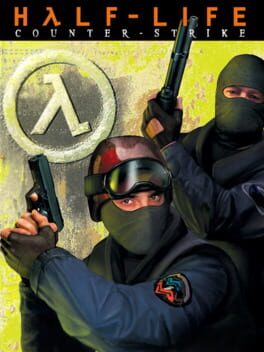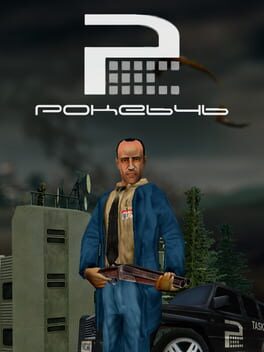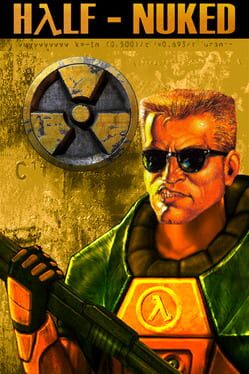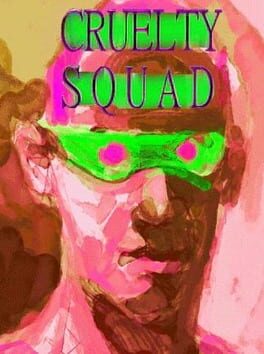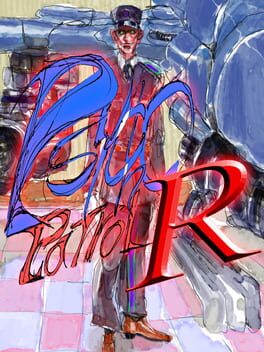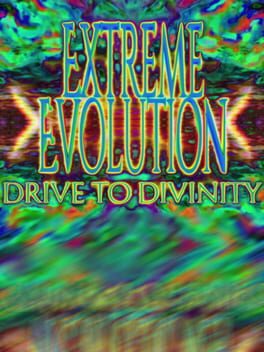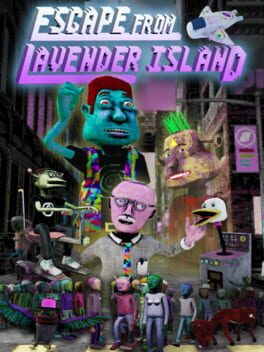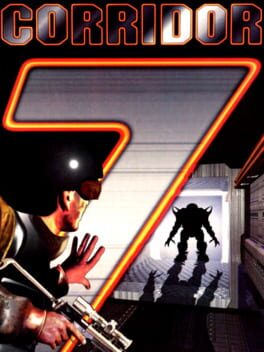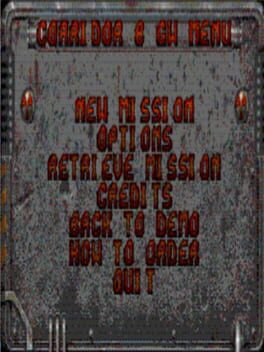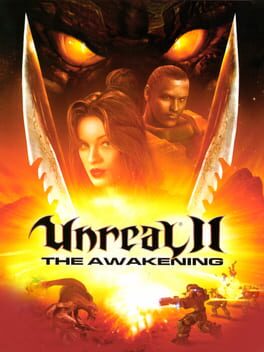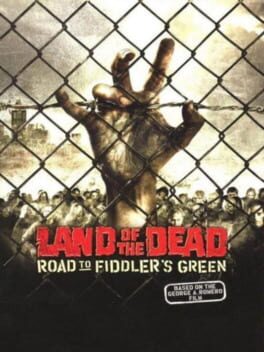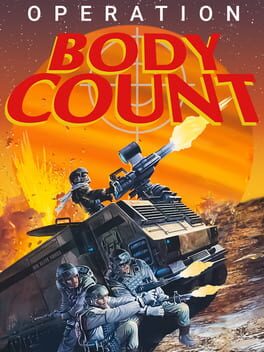Yeij
BACKER
184 reviews liked by Yeij
Fallout
1997
Fallout
1997
One of the sadder things I’ve realised recently is that the original Fallout may not be as influential as much as it’s made it out to be, at least when it comes down to its mechanics. But I’m no real historian, and it may very well have changed the world of RPGs forever. Still, I don’t think it really matters because at the end of the day this is still a damn good game.
Four years ago I played this game for the first time and finished it in one sitting, and recently I ventured out to the wasteland once again. Shining blue spandex, bright hot sun, searching for a water chip; it all feels too familiar. Ah, that control scheme…it feels clunky but once you get the hang of its fits this game like a glove. Fast and snappy, perfect for that retro-future aesthetic. Still, I can’t deny I’ve ever particularly liked how this game’s combat is. Nothing horribly wrong with it, but often times it feels too static, like I’m playing a board game with a computer that’s determined to kill me. Probably what they were going for too.
Stopped by Shady Sands, and gave birth to a nation there. Went to Vault 15, and I saw ruins. Ran into the Khans, and slaughtered them all. Headed to Necropolis to give the mutants dirt naps, and saved my vault. Strolled into Junktown for the casino and killed the owner; I left as quietly as I came. Stopped by The Hub for the water, and stayed to help uncover the disgusting truth behind both the missing caravans and those delicious Iguana Bits. Ran into The Brotherhood of Steel; they told me to fuck off. I saved Los Angeles for last, and it was as much a shithole as I had expected.
After you get the water chip, the last half is really unsettling. You feel that there’s an imminent evil heading into this world as you encounter these monsters more and more. As you spend hours upon hours searching for a man you assume to be the devil himself, you grow accustomed to the hell that is this world. Despite being coddled at birth, you make this wasteland yours. And by the time meet the creator of this madness, it really just does feel like a Wednesday in this irradiated world. This game is absurdly funny, not only with its writing and critiques of American culture but right down to the game design itself with the funniest bit being that the thing you spent the last half searching for is just straight left. Haha, all that work for something so simple.
I hated the Overseer four years ago. Really thought of him as nothing more than an ungrateful speck of a man. But today, as I blew up that evil lair and saw everything that my actions wrought and how I changed this world forever, I stood in front of that cold metal door wearing dark green combat armor and a rocket launcher in hand. There, I saw myself. I saw a man in shining blue spandex walking up to someone he just doesn’t recognize anymore. He is confused now as I was in the beginning, he just doesn’t understand and I now realize where he’s coming from. I could hear the fear in his voice, fear of this horrible world that just sucks.
What if we ARE the only safe place in the world? You just gave us back all these lives…I can’t take the chance of losing them.
I’m sorry. You’re a hero…and you have to leave.
You walk alone. Into this heartless, cruel, unforgiving world. Shining blue spandex, bright hot sun, searching for a purpose. You found it one day, but long after your death, another evil arose. Don’t worry, another hero just like you saved us again.
Four years ago I played this game for the first time and finished it in one sitting, and recently I ventured out to the wasteland once again. Shining blue spandex, bright hot sun, searching for a water chip; it all feels too familiar. Ah, that control scheme…it feels clunky but once you get the hang of its fits this game like a glove. Fast and snappy, perfect for that retro-future aesthetic. Still, I can’t deny I’ve ever particularly liked how this game’s combat is. Nothing horribly wrong with it, but often times it feels too static, like I’m playing a board game with a computer that’s determined to kill me. Probably what they were going for too.
Stopped by Shady Sands, and gave birth to a nation there. Went to Vault 15, and I saw ruins. Ran into the Khans, and slaughtered them all. Headed to Necropolis to give the mutants dirt naps, and saved my vault. Strolled into Junktown for the casino and killed the owner; I left as quietly as I came. Stopped by The Hub for the water, and stayed to help uncover the disgusting truth behind both the missing caravans and those delicious Iguana Bits. Ran into The Brotherhood of Steel; they told me to fuck off. I saved Los Angeles for last, and it was as much a shithole as I had expected.
After you get the water chip, the last half is really unsettling. You feel that there’s an imminent evil heading into this world as you encounter these monsters more and more. As you spend hours upon hours searching for a man you assume to be the devil himself, you grow accustomed to the hell that is this world. Despite being coddled at birth, you make this wasteland yours. And by the time meet the creator of this madness, it really just does feel like a Wednesday in this irradiated world. This game is absurdly funny, not only with its writing and critiques of American culture but right down to the game design itself with the funniest bit being that the thing you spent the last half searching for is just straight left. Haha, all that work for something so simple.
I hated the Overseer four years ago. Really thought of him as nothing more than an ungrateful speck of a man. But today, as I blew up that evil lair and saw everything that my actions wrought and how I changed this world forever, I stood in front of that cold metal door wearing dark green combat armor and a rocket launcher in hand. There, I saw myself. I saw a man in shining blue spandex walking up to someone he just doesn’t recognize anymore. He is confused now as I was in the beginning, he just doesn’t understand and I now realize where he’s coming from. I could hear the fear in his voice, fear of this horrible world that just sucks.
What if we ARE the only safe place in the world? You just gave us back all these lives…I can’t take the chance of losing them.
I’m sorry. You’re a hero…and you have to leave.
You walk alone. Into this heartless, cruel, unforgiving world. Shining blue spandex, bright hot sun, searching for a purpose. You found it one day, but long after your death, another evil arose. Don’t worry, another hero just like you saved us again.
Fallout
1997
I believe it was Boyarsky that came up with the whole "What would the 1950's idea of the future be like" concept that would go on to define for me, the best aesthetic in video games.
I played this game first time a little over a year after it released in 1998 and I never beat it but I remember being floored by the concepts / ideas and around this time, I used to play DnD with friends but this game would go on to define what a computer role-playing game is for me. You suddenly had a influx of CRPGs and many of which were set in DnD worlds with DnD rulesets and man, Fallout was still better because it was defined by its own in-house system.
Many of those DnD crpgs of that era are games I adore. Hell, Planescape: Torment very well may be the greatest RPG ever made -- I still prefer Fallout (and Arcanum).
I eventually beat this a few years later after that first time and yeah, Fallout reigns supreme for me. Extremely happy to see the series getting so much love this week thanks to the TV series (I like it).
I played this game first time a little over a year after it released in 1998 and I never beat it but I remember being floored by the concepts / ideas and around this time, I used to play DnD with friends but this game would go on to define what a computer role-playing game is for me. You suddenly had a influx of CRPGs and many of which were set in DnD worlds with DnD rulesets and man, Fallout was still better because it was defined by its own in-house system.
Many of those DnD crpgs of that era are games I adore. Hell, Planescape: Torment very well may be the greatest RPG ever made -- I still prefer Fallout (and Arcanum).
I eventually beat this a few years later after that first time and yeah, Fallout reigns supreme for me. Extremely happy to see the series getting so much love this week thanks to the TV series (I like it).
Cyberpunk 2077
2020
Might give it a second chance later, but I'm going to shelve for now. There is clearly an insane amount of care put into many aspects of the game by people who are clearly love the TTRPG. Unfortunately, at its core the game has the same story and gameplay depth as an RPG like Fallout 3, which is a shame because I was really hoping for something meatier after all the patches and DLC.
That Dragon, Cancer
2016
Why do we play videogames?
There’s no right or wrong answer to this question. For a lot of us, videogames exist as a form of entertainment. We seek to exploit and bend game mechanics to our will to have fun, competing both against the game and against others in this push and pull of winning versus losing. For me, I see fun as part of the spectrum of emotions that interactive media can bring out of us; while I’m always down to play video games for enjoyment, I’ve also been a bit of a believer that videogames can coexist alongside this tried-and-true definition as a medium that’s just as capable of bringing out an entire range of emotions like sorrow, anxiety, and tension, alongside the joy of playing games. And so, it was in that kind of mood that one day, I was browsing the Steam store for indie games, scouring for the newest exploratory story-rich game present as a particular species of “art game,” “games for change,” “social impact games,” or whatever term you want to use for that strain of indie games that tries to tell a story via integration of game mechanics and narrative that focuses less on big budget production and more on the construction and deconstruction of everything else going into it.
Enter That Dragon, Cancer. I’ve known about this title for at least five, maybe six years now, but never got around to it; perhaps I felt as if I wasn’t in the right mood, the right setting, hadn’t done the proper amount of preparation to really get everything out of the game. And honestly, nothing could have ever prepared me for it. No amount of playing What Remains of Edith Finch or Spiritfarer or even Rakuen alongside anything marked as a “tearjerker” or under the “Emotional” tag on Steam could have left me ready to tackle the heavy subjects presented in That Dragon, Cancer, an experience which the Steam Store page sums up as “An immersive, narrative videogame that retells Joel Green’s 4-year fight against cancer through about two hours of poetic, imaginative gameplay that explores themes of faith, hope and love.” It is the most undisguised game I have perhaps ever experienced, a game that is so unapologetically personal and close to the heart in memorializing a lost family member that I felt guilty at times intruding upon the scenes and memories written into the engine. And it did so in a way that I honestly cannot say many other games have attempted, much less done well.
Most games in this genre utilize a variety of (often thinly) veiled narrative metaphors to portray morals and tragedy alongside gameplay, embedded character backgrounds and world-building to provoke thoughts and emotions among the players; they don’t necessarily market themselves as games that are meant to spin yarns of melancholy and despair, but they have that sort of “feel” to them where you can tell that in many cases, a once joyous and brightly colored tale is headed in that general direction. I don’t think That Dragon, Cancer is anything like that; it is extremely upfront about its content and its intentions. Reading the description on the store page, it states, "This is where we go to remember our son Joel, up through here along this path. We want to show you who he was, and how his life changed us. Can we walk here together for a while?" There are no illusions of what lies at the end of the tunnel; you know how the game ends. Quite literally, what you see is what you get; this all actually happened, and the game becomes that much more emotionally raw because of that. It presents itself as a point and click adventure game with sporadic videogame gameplay elements and references scattered throughout (controlled very simply as there’s only one instance that actually requires use of the keyboard), serving to highlight the seemingly mundane in Joel Green’s five-year life as the valuable memories that construct his story. And make no mistake; this is a “video game,” just stripped down to its bare essentials. The medium’s elements are there to both emphasize the metaphors that convey the Green family’s struggle and at the same time, cleverly impart and evoke emotions by twisting your perception of what the game mechanics mean to the player regarding agency and perspective.
I’ll address one of the elephants in the room at this time; there are a lot of complaints scattered across the internet about how the gameplay is unfulfilling, or “unfun,” or how it’s a “bad video game” and shouldn’t be classified as a video game. Well… yeah, that is the point. Ryan Green has stated that it would defeat the purpose of the game if the tale of his family tending to Joel’s cancer treatment was considered fun. The closest comparison that I could make here would be to Phil Elverum’s album A Crow Looked At Me, written in the wake of his wife’s passing and focusing on brutally honest and unflinching diary-like lyricism with more muted musicality, and even this is an oversimplification. What Ryan Green sought to bring out of the medium was, rather, evoking a variety of emotions as you closely follow Joel’s journey. His answer to the “game” aspect is this: "I would say, 'No, it's not a game, but there are games in it… [a]nd it's not about fun. But there are moments when you have fun. And life is a mixture of the sorrowful and the joyful and weeping and playing and praying, and so I hope that it's a reflection of our life, you know, in the form of a videogame." The authors never intended for the game to exist simply as “a vault of sadness”; there are moments of pristine joy, when you spin Joel in the roundabout in the playground at the start of the game, or when you’re celebrating his end of treatment day in a kart racing minigame in the hospital corridors. And there are moments of tenderness, when Joel’s playing with the dog and you move the stethoscope around to revisit his sounds of laughter, or when Joel lies in his father’s arms feeding off the IV, and moments of anger, trepidation, and exhaustion when Ryan and Amy Green learn that the tumors have been spotted again and become overwhelmed in their tidal waves of grief. To try and label That Dragon, Cancer as another “tearjerker” would be wrong; the whole package is much more than just an outpouring of grief, and the game mechanics themselves serve as devices to impart the wide range of emotions.
You may have heard of the controversy surrounding That Dragon, Cancer’s address towards full Let’s Plays of the game, where some YouTube playthroughs of the game were copyright claimed due to audio (from Jon Hillman’s soundtrack) and the Numinous Games team lamented that some full playthroughs had hit millions of views with some not even linking to the original authors/source material, even though the game at that time had only sold a modest 16,000 copies. While the topic of the relationship between game developers and Let’s Players is beyond the scope of this review, I do want to state this; I don’t believe that a Let’s Play is a genuine substitute for actually experiencing That Dragon, Cancer. It is nevertheless valuable as a snapshot of how another person views the game through their own lens, but it will never replace Ryan Green’s vision of putting the player into the family’s shoes, experiencing every moment of their journey of hope in the shadow of death. He came to the idea of translating his experiences into video game form from reflecting upon one miserable night, where Joel kept howling from dehydration and nothing Ryan did could ease his pain; he had been thinking about how mechanics dictated how players in a video game interact with elements on the screen, and thought “This is like a game where the mechanics are subverted and don’t work.” Several notable instances registered during my own playthrough that confounded my own expectations. The structure of the overall game itself is an interesting example; most games of this form utilize a pseudo-open world environment within the levels, where players walk around with WASD and look around with the mouse. But as mentioned previously, That Dragon, Cancer simplifies this approach and works as a point and click to move to highlightable nodes; by doing so, it has the appearance of a game that suggests freedom within its environments, but in reality restricts you to only a few locations with certain viewpoints embedded for the characters’ experiences, as such takes full advantage of maximizing detail within certain viewpoints while subverting this expectation of free movement and focusing the player on reliving the experiences of those represented in the game while quite literally standing in their place. Another good example happens during a certain dream sequence where Joel is floating in the stars hanging onto heart balloons, while you as the player must control him, dodging spiky black balls of thorns that represent the antagonist of this narrative, cancer, omnipresent and always just lurking around the corner in its pernicious, pervasive malice. Here, the game subverts the idea of a win condition; you can keep dodging the spiky balls for as long as you’d like (or rather, as long as you’re able to), but there’s no end or reward to “doing well;” at some point, cancer will pop all of Joel’s heart balloons, at which the nightmare ends. Finally, the aforementioned story segment titled “Dehydration” puts you in the role of Ryan looking over Joel during that fateful night where an inconsolable Joel, wailing in anguish and banging his head against the hospital bed crib right beside you, simply cannot be stopped. You, as Ryan, can attempt to ease Joel by giving him juice boxes as a remedy for the dehydration, but Joel just vomits it back up. As Joel continues coughing and crying, the illusion of player control disappears and Ryan is left feeling empty, his head face down on his hands as he prays for relief, that a miracle will happen and bring his son a moment of peace. Only by playing the video game can you experience the shock when first offered the expectation of a certain degree of player agency, and then having the curtains torn away when it’s revealed that nothing you do will lend any semblance of changing the final outcome.
And yet, the developers went further; Numinous Games further experimented with their ideas of player perspective and player agency that could only be utilized in the video game format. One emblematic example occurs during chapter seven, aptly titled “I’m Sorry Guys, It’s Not Good.” You’re first introduced to the See n’ Say that Joel is playing around with as a brief moment of levity, the calm before the storm. Once the doctors enter the room, the animal slots on the See n’ Say become the faces of the Green family and the doctors; you can then use the See n’ Say to progress the conversation and shift the perspective to one of the doctors or the family members and essentially, listen to their inner thoughts. As the conversation continues, the sea level begins to rise; you as the player can rewind time using the See n’ Say to revisit the adults’ perspectives in the room, allowing you to take the necessary time to process the heavy topic of Joel’s final prognosis before the ocean swallows everyone. But at some point, you have to move on and accept that your actions cannot prevent the inevitable, just as Joel and the adults cannot fight the ocean; the lack of control becomes even more evident. It’s in this moment that I as the player began to reflect upon the time spent in the scenes prior; the game never rushed me as I spent time playing with Joel in the playground, or rocking in a chair holding Joel as he was fed with his IV, but did I, as the player, spend enough time with Joel to decompartmentalize everything that was going on around me, or was I just letting time slip by me in these fleeting moments when the end was nigh? This idea of using a video game space to capture and remain transfixed in moments in time was reflected in the documentary Thank You For Playing, where Amy Green commented that the family was so eager to document so much regarding Joel’s life and the everyday moments spent with him, because they were afraid of what would happen if they weren’t recording and if so, “wouldn’t ever be able to go back.” The final scene of the game, titled “Picnic at the edge of the world,” serves as a final reminder of this idea. Here, after taking a rowboat with just you and Joel, you meet Joel in the clearing of the woods on an isolated island, where he is surrounded by pancakes and finally able to speak coherently (not present prior because the cancer had caused significant development issues). He offers you a pancake and a seat at the picnic as he scratches his dog “Manju,” and your response is to blow bubbles as Joel stares in awe and attempts to catch them. There’s no strict time limit on this scene, as you can theoretically blow bubbles forever with Joel here, though the camera will begin to pan away after a few moments of non-interaction. But, you still the chance to go back if you change your mind for a little bit, as an icon appears to signify that it’s still possible to click back to the picnic to blow more bubbles. The player agency here is all that's necessary to signify the importance of this final moment; you can still go back and blow bubbles to your own leisure, but at some point, you have to let go, just like the Green family did. As such, no other medium can offer this idea of player agency and control to highlight just how important these seemingly mundane moments with Joel are in the overall scope of his life, giving you as the player as much time as you need to process the details while giving you the option to move forward when you’re ready. Nevertheless, it’s unafraid to suddenly take away that agency when it feels the need to make a point, as “That's what fighting cancer is like... no agency, no control”.
There’s one other significant example that I think emphasizes That Dragon, Cancer’s understanding of subverting video game mechanics and player agency/control to impart a wide range of emotions, in the form of Scene 9, “Joel the Baby Knight.” Here, the player controls Joel in a set of cardboard armor as Amy and Ryan Green convey Joel’s treatment as his battle versus a dragon named Cancer in the form of a bedtime story to their other children. Reminding me as an almost throwback to the early, crude 2D platformers I played as flash games on Newgrounds, this section is almost fun; you duck underneath Cancer’s fireballs as you traverse the DIY videogame landscape, throwing spears at MS Paint red serpents in your way. Eventually, Joel enters a cave, where he is chased down and trapped by the dragon. And here, the developers do something simple yet effective; you can’t actually slay the dragon. No matter how well you play with the rough controls, dodging the fireballs and throwing spears to increase your score as the dragon’s health bar slowly decreases, it will never decrease past half a heart. Because after all, as one of the other kids mentions, Joel’s just a little kid, and “babies can’t defeat dragons.” Nor can their neighbor Tim, from church; both eventually fall to the dragon. It seems like such an easy design choice in retrospect, but this metaphor, and my personal moment in finding out that my efforts ultimately would never beat the “boss,” spoke volumes in conveying how cancer is this beast that can be dulled, but never truly defeated. And it’s in this moment that Amy and Ryan Green begin to work in their faith, telling their kids that “God is right there fighting the dragon with Joel” and that while many brave knights have valiantly fought cancer, and that it may appear that they have lost because they died, “maybe getting to be done fighting was grace.”
Perhaps this is the most contentious aspect of That Dragon, Cancer. Ryan and Amy Green are very devout Christians, and their faith in God and those around them is one of the main themes of the overall game. For what it’s worth, I never saw this as a negative, because despite not being a religious person myself, Ryan and Amy never felt preachy to me; their struggle with maintaining faith in the depths of despair while their child battled terminal cancer is integral to them ultimately accepting Joel’s fate. Ryan’s struggle in particular feels very human; he has many glimpses of doubt and is portrayed as someone who wants to be “drowning” in his doubt, just to feel what it’s like even when Amy attempts to pull him out. Everyone deals with death in different ways, and I appreciate that something this personal is not only shown at all, but portrayed with thoughtful nuance; the Greens come across as far too earnest and caring of Joel for me to broach this topic with any sense of cynicism. Ryan has stated that “Loving Joel was not safe,” but they didn’t even see detachment as an option. Amy herself admitted, “We pushed past that self-preservation because Joel was worth loving, even if that love could crush us.” Ultimately, I will admit that I also don’t know how important my interpretation of their faith is; this is a love-letter to their deceased child that feels like I am infringing upon their personal space at times when viewing through their window, and while I and the Green family admit that the game is a tough sell, it is ultimately something so personal and so sincerely told that I’m not sure if outside interpretations matter in the overall scope of the Greens’ experiences. But there lies the bigger question; if the game is so niche, so “unfun” to play and perhaps polarizing to many who are not devoutly religious, and may even hit “too close to home” for some who have been there, then why take a chance and play this game at all?
Two particular stories come to mind. The first takes place during PAX Prime, 2013, in a small booth dedicated to showing curious attendees an early demo of the game. Responses to the game ranged from some hastily walking away, to some more becoming teary-eyed and needing some time to recompose before leaving, to the developer who began to sob and said “I don’t want to be here at PAX; I want to be home with my kids.” The depth of emotional responses evoked by the demo that Ryan Green witnessed that day brought something out of him that he had previously forgotten, and a little while later, as captured in the documentary Thank You For Playing, he too is beside himself with tears; according to him, his experiences of taking care of Joel and being alongside Joel during every step of his treatment had become so normalized to him, that he hadn’t completely realized the enormity of many of the memories that had been present in the demo. The second story comes as an extension of this launching point: during the Kickstarter campaign used to further fund the game’s development, Numinous Games gave their backers an opportunity to include messages addressed to their own family members and loved ones, many of whom had also battled cancer and were no longer in this world. These messages are scattered throughout the rooms and hallways of the scene titled “Waking Up,” in the form of hundreds of cards lying about the environment. This particular interaction is something that cannot ever be captured 1:1 by a video recording of the game; it is up to the player to choose how ever many cards and messages they want to read before moving on. Personally, I tried to get to as many cards as I could, but the sheer number of messages and tributes left me overwhelmed at times. It was in that moment that I realized my initial interpretation of That Dragon, Cancer’s scope was wrong; it wasn’t just a memorial for Joel, because at the end of the day, “…while this is a story about Joel, everybody has a Joel.”
I will be frank; while I may have experienced some degree of loss in my life, nothing I have experienced even comes close to the loss that the Greens have encountered in their recollection of Joel’s story. To even suggest that I could try and use my own experiences to relate my own struggles to their struggle of being right beside Joel Green during every step of his treatment and eventual passing would be disrespectful to his memory and everything that the family has gone through. That is why I believe that the least I can do, is hear them out. To gain a window into a snapshot of their lives as a complete outsider to try and better understand their experiences while looking through their lens with the video game medium in a tale that is so painfully intimate is something so powerful, that I’m not sure words are strong enough to describe the experience. Empathy is what can be gleaned here. Moreover, in another article, O’Hern et al. claims that the game may be conducive in the training of health care workers, stating that “[e]vidence suggests… empathy decreases during medical training,” and that emotional experiences like That Dragon, Cancer may serve as a powerful preservative of empathy. It’s why despite being a game that “is not fun to play,” That Dragon, Cancer is valuable in utilizing the video game medium and all its various tools and mechanics to more effectively convey its tale of Joel Green while providing an outlet, both for those who have experienced similar loss to share and for those who have not experienced similar loss to step into different shoes to better understand the perspectives of those who have.
I can’t help but hold the Green family in high regards for the decisions made during the production of this game, or how it was even conceived in the first place, or how its bold, intense, vulnerability alongside carefully examined and thought-out use of the video game medium manages to evoke a wide range of emotions. It’s unfathomable to me that “[i]t was the story that began as a miracle and ended as a memorial” and it still manages to remain more than just an outpouring of grief, because Joel Green’s death was more than just a tragedy. At the end of the day, it wasn’t even the story that they wanted to tell. Regardless, they’re choosing to forge their own path forward, and share their experiences with others in hopes that we can become more open about discussing death, or that personal experiences can be more expressively shared through the video game medium and we’re often “all in this together,” or even implementing death as more than just a video game mechanic that serves as a fail state or a trivial means to an end, instead taking a more “death positive” approach that examines death in video games in dealing with its meaning and its consequences. Ryan Green himself asks, “What if videogames are the inception of a medium that will allow us to encode the voices of people who have changed the world... or in my case, a small voice, that changed my whole world?”
In another sense, I was wrong again. I thought That Dragon, Cancer was far too personal, starkly penetrating, and profound for me at first; I originally saw it more or less as a documentary painted with adversity, an unspeakably hard tale captured in a video game space that I would play once, shed my tears, and move on having listened to their story with little to no catharsis. After all, how could one find catharsis in something that is so tragically true? But it was much more than that; the journey of being in someone else’s shoes, living a little of their life through video games capturing an emotional landscape that would otherwise be lost in time and having my expectations played with thoughtfully to impart an array of feelings that otherwise may not have been evoked from a more passive experience... that was the catharsis itself. I will not “score” That Dragon, Cancer or mark this with spoilers in the hopes of talking about this experience more openly and out of respect for the Greens’ story, but let this be known; I could not help but be moved by the earnestness of what was presented to me over the course of two hours. This experience has once again reminded me that emotionally compelling pieces of media have the power to change lives, and while still in their relative infancy in video games, games like That Dragon, Cancer continue to reaffirm my belief that this medium has value and still has so much more to offer. I suppose that’s why I play video games at the end of the day; to feel a range of emotions just like this, and to share my experiences with others in hopes that they will get similar reactions or experiences just like me. Thank you for sharing your story, Ryan & Amy Green, and may Joel Green rest in peace.
Sources used:
That Dragon, Cancer Steam Store Page
Thank You For Playing
That Dragon, Cancer 2016 Game Awards Acceptance Speech
That Dragon, Cancer wins Game Innovation | BAFTA Games Awards 2017
A video game to cope with grief | Amy Green
Curing ideological cancers with video games
Experimental Gameplay Workshop 2015: That Dragon Cancer
That Dragon, Cancer & Purpose
Errant Signal - That Dragon, Cancer
That Dragon, Let’s Play
On Let’s Plays
Turning tragedy into a videogame memorial
"That Dragon, Cancer" Feature Film - "Thank You For Playing" Documentary
E3 13: That Dragon, Cancer Interview
That Dragon, Cancer - A journey with a family dealing with cancer - PAX 2013
Interview With Ryan & Amy Green: Creators Of 'That Dragon, Cancer'
Meet Joel, taking it one day at a time | My Last Days
That Dragon, Cancer: A game for Joel
Tribeca ’15: “That Dragon, Cancer” Q&A with Ryan Green
Interview with Ryan & Amy Green and the Development Team of That Dragon, Cancer
A Father, a Dying Son, and the Quest to Make the Most Profound Videogame Ever
Representation of Death in Independent Videogames: Providing a Space for Meaningful Death Reflection
That Dragon, Cancer—Exploring End of Life Through an Unwinnable Video Game
There’s no right or wrong answer to this question. For a lot of us, videogames exist as a form of entertainment. We seek to exploit and bend game mechanics to our will to have fun, competing both against the game and against others in this push and pull of winning versus losing. For me, I see fun as part of the spectrum of emotions that interactive media can bring out of us; while I’m always down to play video games for enjoyment, I’ve also been a bit of a believer that videogames can coexist alongside this tried-and-true definition as a medium that’s just as capable of bringing out an entire range of emotions like sorrow, anxiety, and tension, alongside the joy of playing games. And so, it was in that kind of mood that one day, I was browsing the Steam store for indie games, scouring for the newest exploratory story-rich game present as a particular species of “art game,” “games for change,” “social impact games,” or whatever term you want to use for that strain of indie games that tries to tell a story via integration of game mechanics and narrative that focuses less on big budget production and more on the construction and deconstruction of everything else going into it.
Enter That Dragon, Cancer. I’ve known about this title for at least five, maybe six years now, but never got around to it; perhaps I felt as if I wasn’t in the right mood, the right setting, hadn’t done the proper amount of preparation to really get everything out of the game. And honestly, nothing could have ever prepared me for it. No amount of playing What Remains of Edith Finch or Spiritfarer or even Rakuen alongside anything marked as a “tearjerker” or under the “Emotional” tag on Steam could have left me ready to tackle the heavy subjects presented in That Dragon, Cancer, an experience which the Steam Store page sums up as “An immersive, narrative videogame that retells Joel Green’s 4-year fight against cancer through about two hours of poetic, imaginative gameplay that explores themes of faith, hope and love.” It is the most undisguised game I have perhaps ever experienced, a game that is so unapologetically personal and close to the heart in memorializing a lost family member that I felt guilty at times intruding upon the scenes and memories written into the engine. And it did so in a way that I honestly cannot say many other games have attempted, much less done well.
Most games in this genre utilize a variety of (often thinly) veiled narrative metaphors to portray morals and tragedy alongside gameplay, embedded character backgrounds and world-building to provoke thoughts and emotions among the players; they don’t necessarily market themselves as games that are meant to spin yarns of melancholy and despair, but they have that sort of “feel” to them where you can tell that in many cases, a once joyous and brightly colored tale is headed in that general direction. I don’t think That Dragon, Cancer is anything like that; it is extremely upfront about its content and its intentions. Reading the description on the store page, it states, "This is where we go to remember our son Joel, up through here along this path. We want to show you who he was, and how his life changed us. Can we walk here together for a while?" There are no illusions of what lies at the end of the tunnel; you know how the game ends. Quite literally, what you see is what you get; this all actually happened, and the game becomes that much more emotionally raw because of that. It presents itself as a point and click adventure game with sporadic videogame gameplay elements and references scattered throughout (controlled very simply as there’s only one instance that actually requires use of the keyboard), serving to highlight the seemingly mundane in Joel Green’s five-year life as the valuable memories that construct his story. And make no mistake; this is a “video game,” just stripped down to its bare essentials. The medium’s elements are there to both emphasize the metaphors that convey the Green family’s struggle and at the same time, cleverly impart and evoke emotions by twisting your perception of what the game mechanics mean to the player regarding agency and perspective.
I’ll address one of the elephants in the room at this time; there are a lot of complaints scattered across the internet about how the gameplay is unfulfilling, or “unfun,” or how it’s a “bad video game” and shouldn’t be classified as a video game. Well… yeah, that is the point. Ryan Green has stated that it would defeat the purpose of the game if the tale of his family tending to Joel’s cancer treatment was considered fun. The closest comparison that I could make here would be to Phil Elverum’s album A Crow Looked At Me, written in the wake of his wife’s passing and focusing on brutally honest and unflinching diary-like lyricism with more muted musicality, and even this is an oversimplification. What Ryan Green sought to bring out of the medium was, rather, evoking a variety of emotions as you closely follow Joel’s journey. His answer to the “game” aspect is this: "I would say, 'No, it's not a game, but there are games in it… [a]nd it's not about fun. But there are moments when you have fun. And life is a mixture of the sorrowful and the joyful and weeping and playing and praying, and so I hope that it's a reflection of our life, you know, in the form of a videogame." The authors never intended for the game to exist simply as “a vault of sadness”; there are moments of pristine joy, when you spin Joel in the roundabout in the playground at the start of the game, or when you’re celebrating his end of treatment day in a kart racing minigame in the hospital corridors. And there are moments of tenderness, when Joel’s playing with the dog and you move the stethoscope around to revisit his sounds of laughter, or when Joel lies in his father’s arms feeding off the IV, and moments of anger, trepidation, and exhaustion when Ryan and Amy Green learn that the tumors have been spotted again and become overwhelmed in their tidal waves of grief. To try and label That Dragon, Cancer as another “tearjerker” would be wrong; the whole package is much more than just an outpouring of grief, and the game mechanics themselves serve as devices to impart the wide range of emotions.
You may have heard of the controversy surrounding That Dragon, Cancer’s address towards full Let’s Plays of the game, where some YouTube playthroughs of the game were copyright claimed due to audio (from Jon Hillman’s soundtrack) and the Numinous Games team lamented that some full playthroughs had hit millions of views with some not even linking to the original authors/source material, even though the game at that time had only sold a modest 16,000 copies. While the topic of the relationship between game developers and Let’s Players is beyond the scope of this review, I do want to state this; I don’t believe that a Let’s Play is a genuine substitute for actually experiencing That Dragon, Cancer. It is nevertheless valuable as a snapshot of how another person views the game through their own lens, but it will never replace Ryan Green’s vision of putting the player into the family’s shoes, experiencing every moment of their journey of hope in the shadow of death. He came to the idea of translating his experiences into video game form from reflecting upon one miserable night, where Joel kept howling from dehydration and nothing Ryan did could ease his pain; he had been thinking about how mechanics dictated how players in a video game interact with elements on the screen, and thought “This is like a game where the mechanics are subverted and don’t work.” Several notable instances registered during my own playthrough that confounded my own expectations. The structure of the overall game itself is an interesting example; most games of this form utilize a pseudo-open world environment within the levels, where players walk around with WASD and look around with the mouse. But as mentioned previously, That Dragon, Cancer simplifies this approach and works as a point and click to move to highlightable nodes; by doing so, it has the appearance of a game that suggests freedom within its environments, but in reality restricts you to only a few locations with certain viewpoints embedded for the characters’ experiences, as such takes full advantage of maximizing detail within certain viewpoints while subverting this expectation of free movement and focusing the player on reliving the experiences of those represented in the game while quite literally standing in their place. Another good example happens during a certain dream sequence where Joel is floating in the stars hanging onto heart balloons, while you as the player must control him, dodging spiky black balls of thorns that represent the antagonist of this narrative, cancer, omnipresent and always just lurking around the corner in its pernicious, pervasive malice. Here, the game subverts the idea of a win condition; you can keep dodging the spiky balls for as long as you’d like (or rather, as long as you’re able to), but there’s no end or reward to “doing well;” at some point, cancer will pop all of Joel’s heart balloons, at which the nightmare ends. Finally, the aforementioned story segment titled “Dehydration” puts you in the role of Ryan looking over Joel during that fateful night where an inconsolable Joel, wailing in anguish and banging his head against the hospital bed crib right beside you, simply cannot be stopped. You, as Ryan, can attempt to ease Joel by giving him juice boxes as a remedy for the dehydration, but Joel just vomits it back up. As Joel continues coughing and crying, the illusion of player control disappears and Ryan is left feeling empty, his head face down on his hands as he prays for relief, that a miracle will happen and bring his son a moment of peace. Only by playing the video game can you experience the shock when first offered the expectation of a certain degree of player agency, and then having the curtains torn away when it’s revealed that nothing you do will lend any semblance of changing the final outcome.
And yet, the developers went further; Numinous Games further experimented with their ideas of player perspective and player agency that could only be utilized in the video game format. One emblematic example occurs during chapter seven, aptly titled “I’m Sorry Guys, It’s Not Good.” You’re first introduced to the See n’ Say that Joel is playing around with as a brief moment of levity, the calm before the storm. Once the doctors enter the room, the animal slots on the See n’ Say become the faces of the Green family and the doctors; you can then use the See n’ Say to progress the conversation and shift the perspective to one of the doctors or the family members and essentially, listen to their inner thoughts. As the conversation continues, the sea level begins to rise; you as the player can rewind time using the See n’ Say to revisit the adults’ perspectives in the room, allowing you to take the necessary time to process the heavy topic of Joel’s final prognosis before the ocean swallows everyone. But at some point, you have to move on and accept that your actions cannot prevent the inevitable, just as Joel and the adults cannot fight the ocean; the lack of control becomes even more evident. It’s in this moment that I as the player began to reflect upon the time spent in the scenes prior; the game never rushed me as I spent time playing with Joel in the playground, or rocking in a chair holding Joel as he was fed with his IV, but did I, as the player, spend enough time with Joel to decompartmentalize everything that was going on around me, or was I just letting time slip by me in these fleeting moments when the end was nigh? This idea of using a video game space to capture and remain transfixed in moments in time was reflected in the documentary Thank You For Playing, where Amy Green commented that the family was so eager to document so much regarding Joel’s life and the everyday moments spent with him, because they were afraid of what would happen if they weren’t recording and if so, “wouldn’t ever be able to go back.” The final scene of the game, titled “Picnic at the edge of the world,” serves as a final reminder of this idea. Here, after taking a rowboat with just you and Joel, you meet Joel in the clearing of the woods on an isolated island, where he is surrounded by pancakes and finally able to speak coherently (not present prior because the cancer had caused significant development issues). He offers you a pancake and a seat at the picnic as he scratches his dog “Manju,” and your response is to blow bubbles as Joel stares in awe and attempts to catch them. There’s no strict time limit on this scene, as you can theoretically blow bubbles forever with Joel here, though the camera will begin to pan away after a few moments of non-interaction. But, you still the chance to go back if you change your mind for a little bit, as an icon appears to signify that it’s still possible to click back to the picnic to blow more bubbles. The player agency here is all that's necessary to signify the importance of this final moment; you can still go back and blow bubbles to your own leisure, but at some point, you have to let go, just like the Green family did. As such, no other medium can offer this idea of player agency and control to highlight just how important these seemingly mundane moments with Joel are in the overall scope of his life, giving you as the player as much time as you need to process the details while giving you the option to move forward when you’re ready. Nevertheless, it’s unafraid to suddenly take away that agency when it feels the need to make a point, as “That's what fighting cancer is like... no agency, no control”.
There’s one other significant example that I think emphasizes That Dragon, Cancer’s understanding of subverting video game mechanics and player agency/control to impart a wide range of emotions, in the form of Scene 9, “Joel the Baby Knight.” Here, the player controls Joel in a set of cardboard armor as Amy and Ryan Green convey Joel’s treatment as his battle versus a dragon named Cancer in the form of a bedtime story to their other children. Reminding me as an almost throwback to the early, crude 2D platformers I played as flash games on Newgrounds, this section is almost fun; you duck underneath Cancer’s fireballs as you traverse the DIY videogame landscape, throwing spears at MS Paint red serpents in your way. Eventually, Joel enters a cave, where he is chased down and trapped by the dragon. And here, the developers do something simple yet effective; you can’t actually slay the dragon. No matter how well you play with the rough controls, dodging the fireballs and throwing spears to increase your score as the dragon’s health bar slowly decreases, it will never decrease past half a heart. Because after all, as one of the other kids mentions, Joel’s just a little kid, and “babies can’t defeat dragons.” Nor can their neighbor Tim, from church; both eventually fall to the dragon. It seems like such an easy design choice in retrospect, but this metaphor, and my personal moment in finding out that my efforts ultimately would never beat the “boss,” spoke volumes in conveying how cancer is this beast that can be dulled, but never truly defeated. And it’s in this moment that Amy and Ryan Green begin to work in their faith, telling their kids that “God is right there fighting the dragon with Joel” and that while many brave knights have valiantly fought cancer, and that it may appear that they have lost because they died, “maybe getting to be done fighting was grace.”
Perhaps this is the most contentious aspect of That Dragon, Cancer. Ryan and Amy Green are very devout Christians, and their faith in God and those around them is one of the main themes of the overall game. For what it’s worth, I never saw this as a negative, because despite not being a religious person myself, Ryan and Amy never felt preachy to me; their struggle with maintaining faith in the depths of despair while their child battled terminal cancer is integral to them ultimately accepting Joel’s fate. Ryan’s struggle in particular feels very human; he has many glimpses of doubt and is portrayed as someone who wants to be “drowning” in his doubt, just to feel what it’s like even when Amy attempts to pull him out. Everyone deals with death in different ways, and I appreciate that something this personal is not only shown at all, but portrayed with thoughtful nuance; the Greens come across as far too earnest and caring of Joel for me to broach this topic with any sense of cynicism. Ryan has stated that “Loving Joel was not safe,” but they didn’t even see detachment as an option. Amy herself admitted, “We pushed past that self-preservation because Joel was worth loving, even if that love could crush us.” Ultimately, I will admit that I also don’t know how important my interpretation of their faith is; this is a love-letter to their deceased child that feels like I am infringing upon their personal space at times when viewing through their window, and while I and the Green family admit that the game is a tough sell, it is ultimately something so personal and so sincerely told that I’m not sure if outside interpretations matter in the overall scope of the Greens’ experiences. But there lies the bigger question; if the game is so niche, so “unfun” to play and perhaps polarizing to many who are not devoutly religious, and may even hit “too close to home” for some who have been there, then why take a chance and play this game at all?
Two particular stories come to mind. The first takes place during PAX Prime, 2013, in a small booth dedicated to showing curious attendees an early demo of the game. Responses to the game ranged from some hastily walking away, to some more becoming teary-eyed and needing some time to recompose before leaving, to the developer who began to sob and said “I don’t want to be here at PAX; I want to be home with my kids.” The depth of emotional responses evoked by the demo that Ryan Green witnessed that day brought something out of him that he had previously forgotten, and a little while later, as captured in the documentary Thank You For Playing, he too is beside himself with tears; according to him, his experiences of taking care of Joel and being alongside Joel during every step of his treatment had become so normalized to him, that he hadn’t completely realized the enormity of many of the memories that had been present in the demo. The second story comes as an extension of this launching point: during the Kickstarter campaign used to further fund the game’s development, Numinous Games gave their backers an opportunity to include messages addressed to their own family members and loved ones, many of whom had also battled cancer and were no longer in this world. These messages are scattered throughout the rooms and hallways of the scene titled “Waking Up,” in the form of hundreds of cards lying about the environment. This particular interaction is something that cannot ever be captured 1:1 by a video recording of the game; it is up to the player to choose how ever many cards and messages they want to read before moving on. Personally, I tried to get to as many cards as I could, but the sheer number of messages and tributes left me overwhelmed at times. It was in that moment that I realized my initial interpretation of That Dragon, Cancer’s scope was wrong; it wasn’t just a memorial for Joel, because at the end of the day, “…while this is a story about Joel, everybody has a Joel.”
I will be frank; while I may have experienced some degree of loss in my life, nothing I have experienced even comes close to the loss that the Greens have encountered in their recollection of Joel’s story. To even suggest that I could try and use my own experiences to relate my own struggles to their struggle of being right beside Joel Green during every step of his treatment and eventual passing would be disrespectful to his memory and everything that the family has gone through. That is why I believe that the least I can do, is hear them out. To gain a window into a snapshot of their lives as a complete outsider to try and better understand their experiences while looking through their lens with the video game medium in a tale that is so painfully intimate is something so powerful, that I’m not sure words are strong enough to describe the experience. Empathy is what can be gleaned here. Moreover, in another article, O’Hern et al. claims that the game may be conducive in the training of health care workers, stating that “[e]vidence suggests… empathy decreases during medical training,” and that emotional experiences like That Dragon, Cancer may serve as a powerful preservative of empathy. It’s why despite being a game that “is not fun to play,” That Dragon, Cancer is valuable in utilizing the video game medium and all its various tools and mechanics to more effectively convey its tale of Joel Green while providing an outlet, both for those who have experienced similar loss to share and for those who have not experienced similar loss to step into different shoes to better understand the perspectives of those who have.
I can’t help but hold the Green family in high regards for the decisions made during the production of this game, or how it was even conceived in the first place, or how its bold, intense, vulnerability alongside carefully examined and thought-out use of the video game medium manages to evoke a wide range of emotions. It’s unfathomable to me that “[i]t was the story that began as a miracle and ended as a memorial” and it still manages to remain more than just an outpouring of grief, because Joel Green’s death was more than just a tragedy. At the end of the day, it wasn’t even the story that they wanted to tell. Regardless, they’re choosing to forge their own path forward, and share their experiences with others in hopes that we can become more open about discussing death, or that personal experiences can be more expressively shared through the video game medium and we’re often “all in this together,” or even implementing death as more than just a video game mechanic that serves as a fail state or a trivial means to an end, instead taking a more “death positive” approach that examines death in video games in dealing with its meaning and its consequences. Ryan Green himself asks, “What if videogames are the inception of a medium that will allow us to encode the voices of people who have changed the world... or in my case, a small voice, that changed my whole world?”
In another sense, I was wrong again. I thought That Dragon, Cancer was far too personal, starkly penetrating, and profound for me at first; I originally saw it more or less as a documentary painted with adversity, an unspeakably hard tale captured in a video game space that I would play once, shed my tears, and move on having listened to their story with little to no catharsis. After all, how could one find catharsis in something that is so tragically true? But it was much more than that; the journey of being in someone else’s shoes, living a little of their life through video games capturing an emotional landscape that would otherwise be lost in time and having my expectations played with thoughtfully to impart an array of feelings that otherwise may not have been evoked from a more passive experience... that was the catharsis itself. I will not “score” That Dragon, Cancer or mark this with spoilers in the hopes of talking about this experience more openly and out of respect for the Greens’ story, but let this be known; I could not help but be moved by the earnestness of what was presented to me over the course of two hours. This experience has once again reminded me that emotionally compelling pieces of media have the power to change lives, and while still in their relative infancy in video games, games like That Dragon, Cancer continue to reaffirm my belief that this medium has value and still has so much more to offer. I suppose that’s why I play video games at the end of the day; to feel a range of emotions just like this, and to share my experiences with others in hopes that they will get similar reactions or experiences just like me. Thank you for sharing your story, Ryan & Amy Green, and may Joel Green rest in peace.
Sources used:
That Dragon, Cancer Steam Store Page
Thank You For Playing
That Dragon, Cancer 2016 Game Awards Acceptance Speech
That Dragon, Cancer wins Game Innovation | BAFTA Games Awards 2017
A video game to cope with grief | Amy Green
Curing ideological cancers with video games
Experimental Gameplay Workshop 2015: That Dragon Cancer
That Dragon, Cancer & Purpose
Errant Signal - That Dragon, Cancer
That Dragon, Let’s Play
On Let’s Plays
Turning tragedy into a videogame memorial
"That Dragon, Cancer" Feature Film - "Thank You For Playing" Documentary
E3 13: That Dragon, Cancer Interview
That Dragon, Cancer - A journey with a family dealing with cancer - PAX 2013
Interview With Ryan & Amy Green: Creators Of 'That Dragon, Cancer'
Meet Joel, taking it one day at a time | My Last Days
That Dragon, Cancer: A game for Joel
Tribeca ’15: “That Dragon, Cancer” Q&A with Ryan Green
Interview with Ryan & Amy Green and the Development Team of That Dragon, Cancer
A Father, a Dying Son, and the Quest to Make the Most Profound Videogame Ever
Representation of Death in Independent Videogames: Providing a Space for Meaningful Death Reflection
That Dragon, Cancer—Exploring End of Life Through an Unwinnable Video Game
This is way less of an ethically focus tested mental illness empathy simulator GAME 4 CHANGE than the (offputtingly self righteous) marketing might lead you to believe. I think this is both a good and bad thing. The way Senua experiences mental illness / hallucinations is hyperstylized and painted with both ridiculous elements of gameification (FOLLOW THE PUZZLE RUNES IN UR MINDZ EYE 4 NEXT OBJECTIVE) and nu-metal woad raider mythological window dressing. It's all just a tad TOO self-seriously morose and hellish and obsessed with exaggerated primeval suffering, and this God of Trauma vibe makes Senua's experiences of mental illness like, totally unrelatable and unaligned with the primary needs and struggles of people dealing with psychosis today. These real-life concerns are usually way more mundane and demoralizing; low decibel but high impact social and material struggles concerning healthcare availability, getting hired/making rent, and functioning in a a hostile individualist world of bootstrap productivity designed for neurotypical people but empathetic to nobody! I really dont understand how, aside from "ending stigma/spreading awareness" this game offers any real calls to action for the lifting up of mentally ill people. Ninja Theory framing their games marketing so high-mindedly but not engaging with any ideas of real material advocacy is laughable, and imo people are completely justified in their disgust and divestment from the entire project based on that alone.
BUT BUT BUT
As a survival horror / walking sim tonal experiment with a unique setting and bold audiovisual design? There are some very interesting choices here. The 3d sound design and fully narrated internal greek chorus is moody, genuinely disturbing, and almost totally unique in popular gaming. The FMV/CGI composite memory sequences have a singular, scuzzy visual texture I just love. IMO Melina Juergens delivers a really absurd performance of almost universally one-note agonized wailing, but her naive (and probably badly directed) commitment to the "heightened intensity equals good acting" bit is equal parts camp and actually kind of cool and transporting if you can meet it where it's at??? The game lags and fails in many ways (redundant, tepid puzzles, kind of awful combat that truly feels there for no reason) but there are a lot of laudable aesthetic choices that give it a much more entrancing and horrific atmosphere than it would have without them. I think this is FAR less of a "mental illness empathy sim" than it is an unrelentingly bleak tone poem about celtic death mythology/ripoff chris cunningham music video using stylized trappings about mental illness to reinforce its oppressive atmosphere, without being 100% hostile and stigmatizing to people with mental health conditions in real life. Personally? I think it's okay for media to explore stylized (even grandiose, mythologized, lurid, "unhelpful") renditions of neuroatypical characters in all kinds of settings, especially when it does make an effort to not make you hate or fear schizophrenic people by its end. I DONT think its okay for work like this to advertise itself as groundbreaking or progressive, especially with so little material centering the lives of neurodivergent people out there.
That's maybe a weird line to draw, and I completely understand (but dont fully agree with) anyone feeling like it's 100% not okay to use such a sensitive topic as window dressing for your grimdark survival horror game under any circumstances. I COMPLETELY agree that the marketing of this game is maybe the most ableist and grotesque thing about it and that just calling it an exploitation horror game would be way more honest. It's like if fromsoftware came out saying that bloodborne is ACTUALLY about ENDING MENTAL ILLNESS STIGMA with FULLY RESEARCHED DEPICTIONS OF BREAKS FROM REALITY. like i dont care if you parade footage from some sensitivity focus group in your making of featurette who the fuck are you guys kidding
fyi I am not someone who deals with hallucinations or any of the symptoms Senua (and millions of irl people) experience, so I am by no means any authority on this--plz dont listen to me i have no power or sway 0:). I'm a big dumb idiot writing about a middling videogame with aesthetics i only sometimes really clicked with!
also the credits song is one of the most embarrassing and maudlin things of all time
also its SO stupid they're making a sequel to this and it totally reveals the insincerity behind all their high-minded promotion of the first game :)
BUT BUT BUT
As a survival horror / walking sim tonal experiment with a unique setting and bold audiovisual design? There are some very interesting choices here. The 3d sound design and fully narrated internal greek chorus is moody, genuinely disturbing, and almost totally unique in popular gaming. The FMV/CGI composite memory sequences have a singular, scuzzy visual texture I just love. IMO Melina Juergens delivers a really absurd performance of almost universally one-note agonized wailing, but her naive (and probably badly directed) commitment to the "heightened intensity equals good acting" bit is equal parts camp and actually kind of cool and transporting if you can meet it where it's at??? The game lags and fails in many ways (redundant, tepid puzzles, kind of awful combat that truly feels there for no reason) but there are a lot of laudable aesthetic choices that give it a much more entrancing and horrific atmosphere than it would have without them. I think this is FAR less of a "mental illness empathy sim" than it is an unrelentingly bleak tone poem about celtic death mythology/ripoff chris cunningham music video using stylized trappings about mental illness to reinforce its oppressive atmosphere, without being 100% hostile and stigmatizing to people with mental health conditions in real life. Personally? I think it's okay for media to explore stylized (even grandiose, mythologized, lurid, "unhelpful") renditions of neuroatypical characters in all kinds of settings, especially when it does make an effort to not make you hate or fear schizophrenic people by its end. I DONT think its okay for work like this to advertise itself as groundbreaking or progressive, especially with so little material centering the lives of neurodivergent people out there.
That's maybe a weird line to draw, and I completely understand (but dont fully agree with) anyone feeling like it's 100% not okay to use such a sensitive topic as window dressing for your grimdark survival horror game under any circumstances. I COMPLETELY agree that the marketing of this game is maybe the most ableist and grotesque thing about it and that just calling it an exploitation horror game would be way more honest. It's like if fromsoftware came out saying that bloodborne is ACTUALLY about ENDING MENTAL ILLNESS STIGMA with FULLY RESEARCHED DEPICTIONS OF BREAKS FROM REALITY. like i dont care if you parade footage from some sensitivity focus group in your making of featurette who the fuck are you guys kidding
fyi I am not someone who deals with hallucinations or any of the symptoms Senua (and millions of irl people) experience, so I am by no means any authority on this--plz dont listen to me i have no power or sway 0:). I'm a big dumb idiot writing about a middling videogame with aesthetics i only sometimes really clicked with!
also the credits song is one of the most embarrassing and maudlin things of all time
also its SO stupid they're making a sequel to this and it totally reveals the insincerity behind all their high-minded promotion of the first game :)
Adaca
2022
at first blush clear sky's beautiful: rich sunlit autumn with its blues, greens, oranges, and browns warm and radiant; chornobyl's surface murk all but lifted entirely and soaked up into the soils and waters and still breathing bodies that inhabit the zone
but it soon becomes plain that the cosmetic changes are something of a diversion; sleight of hand that draws the eyes away from the coming suckerpunch: twenty odd hours of being flanked by grenades, bled to death, mulched by MGs, and robbed blind. a cursory search shows that the lion's share of its legacy revolves around torturing and bamboozling those who expected a straightforward sequel to SoP instead of an Iterative Pain Milker, but as the saying goes: "you opened it, we came"
the heart of the experience is nothing short of broken; theoretical emergent turf wars reduced to ceaseless big boss killing field masturbation due to poor macro level AI and myriad bugs and glitches. every claim and conquest soon snuffed out or stolen; all elaborate actors, a-life improvements, hard fought battles, pleas for help, and catastrophes rendered as droning background noise. this world is doomed, and your input is worthless
it's exhausting, and even more so to know a great deal of it's the result of a series of inefficiencies so great they actively sabotage the very firmament. at times it almost feels like a comedy of errors when the stoned anarchists or authoritarian paramilitary freaks manage to bungle every single lead or advantage you give them. five idiots loping so slowly across the zone that by the time they arrive (if they even bother) they're inevitably pressed into hamburger by the dozen guys who somehow respawned in the interim
when sutured up nicely with the likes of Sky Reclamation Project it lurches upward, alive. all the blood for blood's sake recontextualized: the junkyards and warehouses turned sacrificial pits summon successfully, allies arrive, and land changes hands; guns still jam, MG nests still butcher, and grenades still flow freely, but there's purpose and direction granted. movement in the zone is given breath and motive outside of the infinite looping thresher, conflict finds a utile path, and there's reprieve and closure and tangible winners and losers. unfortunately, it lasts about an hour
once you join a faction you'll walk point-by-point through enemy checkpoints, get into a few scraps, take their base, and that's about it. somehow adhering to intentionality and giving all the dopey wind-up toys a chance to fulfill their goals and retire does nothing but harm. without the futility it oddly ends up even more meaningless; all perpetual motion and conflict rendered still and dull in the blink of an eye. omnipresent inferno degraded into sidequest
the more I dabbled with alterations the more I came to feel that shaking it from its stasis and evening out the unintended caustics made for a lesser experience. SRP's default settings are undoubtedly the best option for keeping clear sky roughly in line with its original intentions, but the tradeoff between the accidental and the deliberate isn't always worth it
if you tinker a bit further there're countless other options that make "improvements" to the likes of ballistics, enemy behaviour, and damage values, but almost all of them do so at the cost of its core identity, sanding it down to another shadow of chernobyl at best and another call of pripyat at worst. most of SRP's optional addons in particular feel designed from the ground up to wrench its teeth out one by one, and while I'm not gonna be a shitty cop about how people wanna enjoy things, I can't help but feel like docile's the wrong look
for me clear sky's best as an experience in overwhelming reduction — of the player, of power, and of dominion. a living space occupied by the dead and a set of systems in perpetual, unavoidable collapse. gears turning and great machines moving in an endless cycle of yearning greed and control. one big dumb bright cozy purgatory
win today, lose tomorrow. spin the world's wheel again
but it soon becomes plain that the cosmetic changes are something of a diversion; sleight of hand that draws the eyes away from the coming suckerpunch: twenty odd hours of being flanked by grenades, bled to death, mulched by MGs, and robbed blind. a cursory search shows that the lion's share of its legacy revolves around torturing and bamboozling those who expected a straightforward sequel to SoP instead of an Iterative Pain Milker, but as the saying goes: "you opened it, we came"
the heart of the experience is nothing short of broken; theoretical emergent turf wars reduced to ceaseless big boss killing field masturbation due to poor macro level AI and myriad bugs and glitches. every claim and conquest soon snuffed out or stolen; all elaborate actors, a-life improvements, hard fought battles, pleas for help, and catastrophes rendered as droning background noise. this world is doomed, and your input is worthless
it's exhausting, and even more so to know a great deal of it's the result of a series of inefficiencies so great they actively sabotage the very firmament. at times it almost feels like a comedy of errors when the stoned anarchists or authoritarian paramilitary freaks manage to bungle every single lead or advantage you give them. five idiots loping so slowly across the zone that by the time they arrive (if they even bother) they're inevitably pressed into hamburger by the dozen guys who somehow respawned in the interim
when sutured up nicely with the likes of Sky Reclamation Project it lurches upward, alive. all the blood for blood's sake recontextualized: the junkyards and warehouses turned sacrificial pits summon successfully, allies arrive, and land changes hands; guns still jam, MG nests still butcher, and grenades still flow freely, but there's purpose and direction granted. movement in the zone is given breath and motive outside of the infinite looping thresher, conflict finds a utile path, and there's reprieve and closure and tangible winners and losers. unfortunately, it lasts about an hour
once you join a faction you'll walk point-by-point through enemy checkpoints, get into a few scraps, take their base, and that's about it. somehow adhering to intentionality and giving all the dopey wind-up toys a chance to fulfill their goals and retire does nothing but harm. without the futility it oddly ends up even more meaningless; all perpetual motion and conflict rendered still and dull in the blink of an eye. omnipresent inferno degraded into sidequest
the more I dabbled with alterations the more I came to feel that shaking it from its stasis and evening out the unintended caustics made for a lesser experience. SRP's default settings are undoubtedly the best option for keeping clear sky roughly in line with its original intentions, but the tradeoff between the accidental and the deliberate isn't always worth it
if you tinker a bit further there're countless other options that make "improvements" to the likes of ballistics, enemy behaviour, and damage values, but almost all of them do so at the cost of its core identity, sanding it down to another shadow of chernobyl at best and another call of pripyat at worst. most of SRP's optional addons in particular feel designed from the ground up to wrench its teeth out one by one, and while I'm not gonna be a shitty cop about how people wanna enjoy things, I can't help but feel like docile's the wrong look
for me clear sky's best as an experience in overwhelming reduction — of the player, of power, and of dominion. a living space occupied by the dead and a set of systems in perpetual, unavoidable collapse. gears turning and great machines moving in an endless cycle of yearning greed and control. one big dumb bright cozy purgatory
win today, lose tomorrow. spin the world's wheel again
Wrath: Aeon of Ruin
2019
3D Swindlers, danish grifters posing as the creatives behind Duke Nukem 3D, Prey, and Max Payne, presents an early access grift half a decade in the making, powered by the "legendary" DarkPlaces. Crafted by the hands of Thief-scene necromancers who would've rather been doing unpaid volunteer work on The Black Parade, WRATH is the real "deal" (unlike Arcane Dimensions, which doesn't cost 19,99). You will not stay awake...
Featuring Soul Link from the Ori and the Blind Forest series.
Featuring Soul Link from the Ori and the Blind Forest series.
4 lists liked by Yeij
